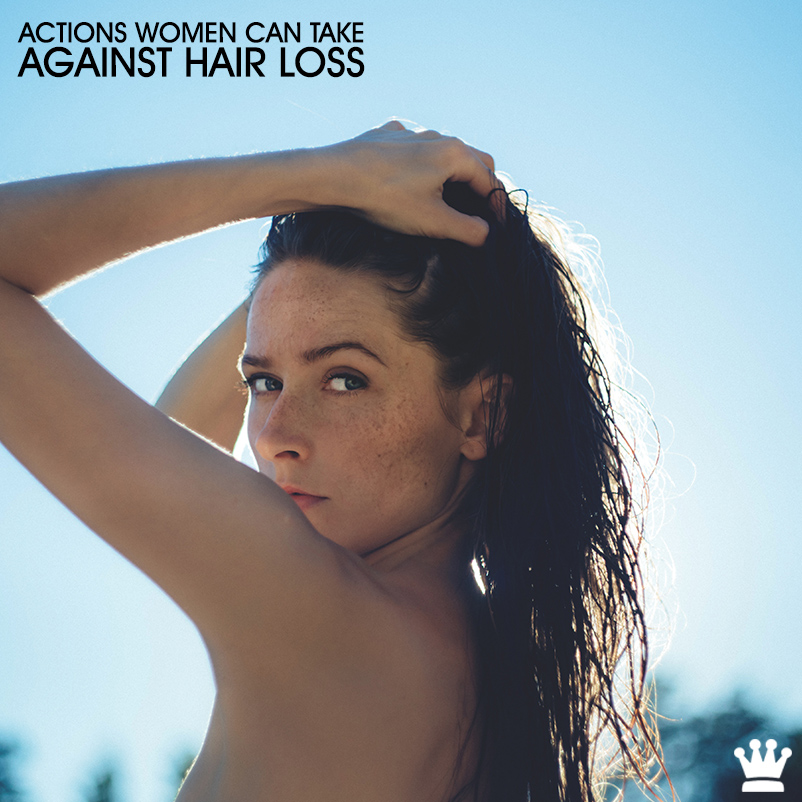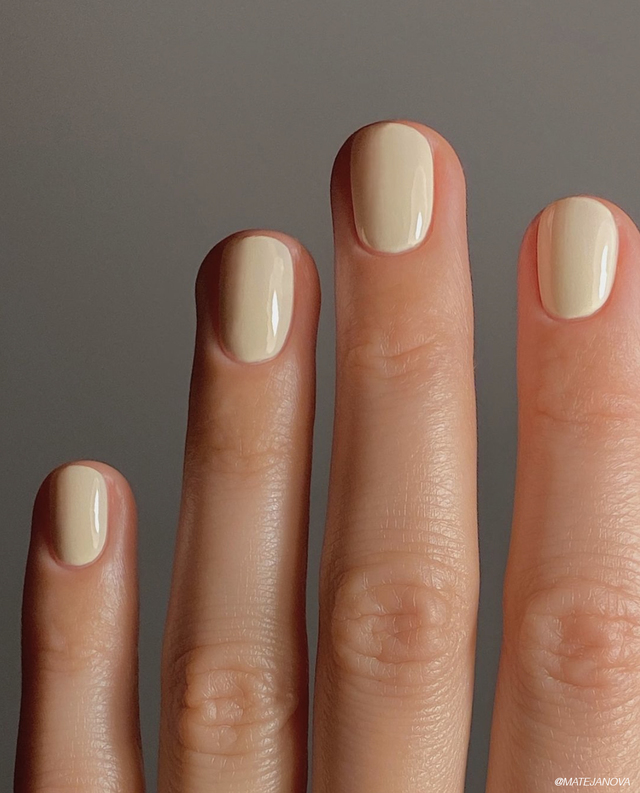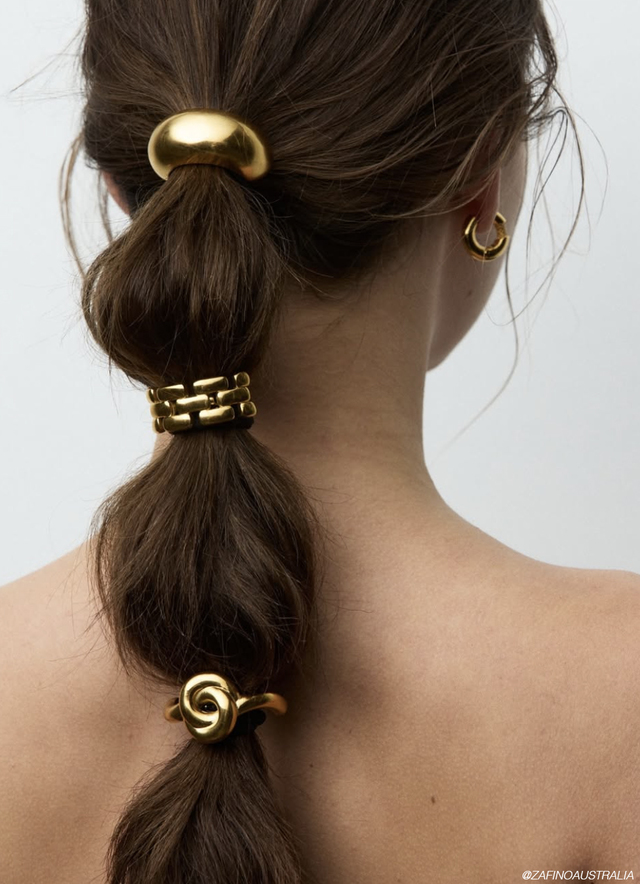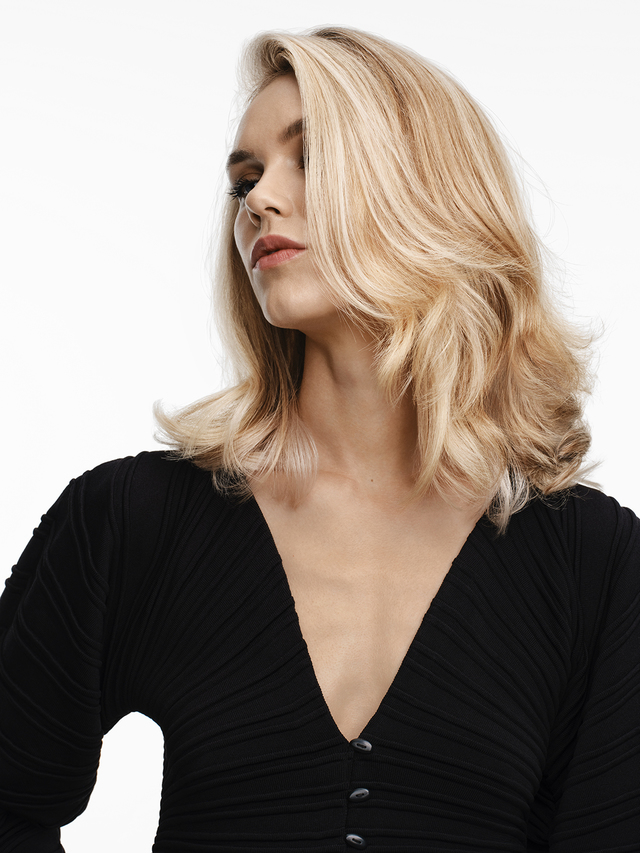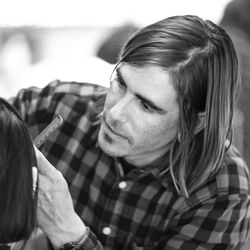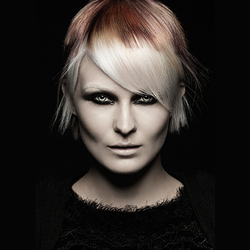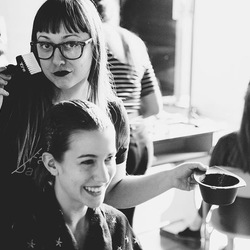Somewhere, there is a long list of topics deemed taboo for women to openly talk about, topics such as periods, menopause, money, and well, hair loss. Hair loss is not subjective to only men, so why are most hair loss discussions geared toward male pattern baldness? Yes, it is more accepted and expected, but 40% of women lose their hair too. Female pattern hair loss is a real thing, and more than 30 million women are finding themselves losing hair at the crown and thinning all around. August is National Hair Loss Awareness Month and it’s time we speak about women and hair loss, and what women can do to take action against it.
What Causes Women to Lose Hair
The first thought, when hair starts to fall out, is usually stress. Now, stress can be a big cause for hair to become weak, but it’s not the only thing that attributes to female pattern baldness. Women lose their hair for a multitude of reasons, including the same reason men lose their hair – a high sensitivity to DHT.
Sensitivity to DHT
Hair loss is dependent on a person's unique combination of DNA and how sensitive that person is to Dihydrotestosterone (DHT), which is a hormone created by the body’s testosterone. Women have traces of testosterone in the body and though it is a small amount, the body converts the testosterone into DHT at especially high quantities, when estrogen levels begin to drop.
Menopause
Hormones play a huge role in why women lose their hair, and hormone levels rise and drop in cycles creating short-term periods of thinning and hair loss. The amount of hormones released in the body start to gradually drop as menopause draws near and falls dramatically during menopause and after. Estrogen aids the hair in growth, which is why women tend to have more hair than men (and can hide thinning and loss a little better) but when estrogen starts to decline, the hair starts to change as well.
Traction Alopecia
Tight ponytails, ballerina buns, and extension braids are having a major style moment right now, but these styles may also cause hair follicles to weaken by pulling too tight at the hair. Unlike most reasons women lose their hair, traction alopecia is completely preventable and when caught early, can be treated to restore healthy hair.
Actions to Take
When you first start to notice hair falling out in excessive amounts, or thinning around the crown, always consult your doctor before you make any drastic changes. Changing your shampoo and conditioner is a great step in the right direction because some contain harsh chemicals, not suited for healthy hair gains. Try a hair stimulating shampoo and conditioner like Revita and Revita.Cor to jumpstart the regrowth process. Also, ironically enough, the same foods that ease women through menopause contain the same nutrients needed to grow healthy hair. Eating a variety of foods that carry calcium, iron, and vitamin D will create healthy strands from the inside out. Cease to over-style, because hair grows best when left alone. Let your hair do what it does best and add a topical treatment like Continuum, every other week to restore your natural texture and improve air-dry styling.
Hair loss is never an easy undertaking to cope with, but there are solutions to help women regrow their hair. However, there first needs to be a space created for women to talk openly about their experiences with fall out, and discuss actions to fight back against it.
Want to know more about the breakthrough hair and skincare products from DS Laboratories? Stalk them on Bangstyle and check out their tips, tutorials and trends, here!
